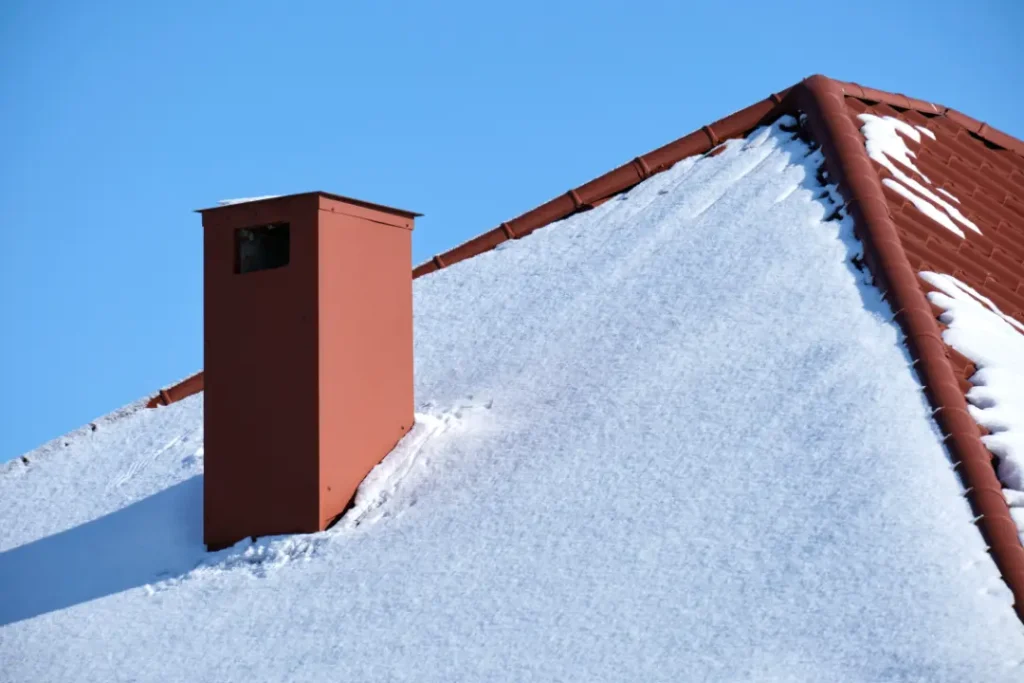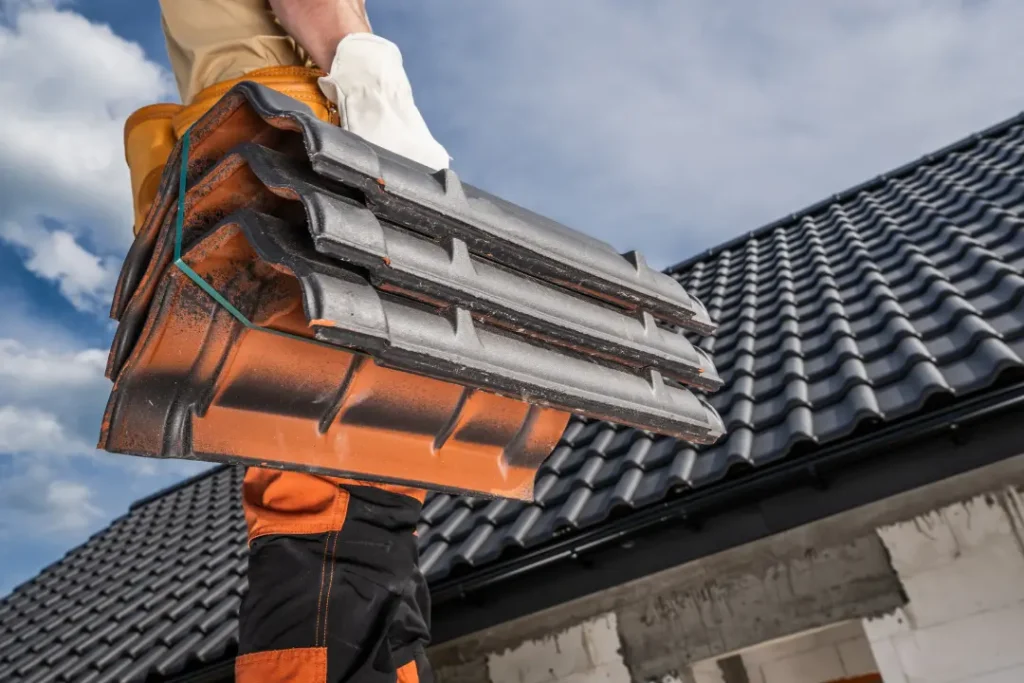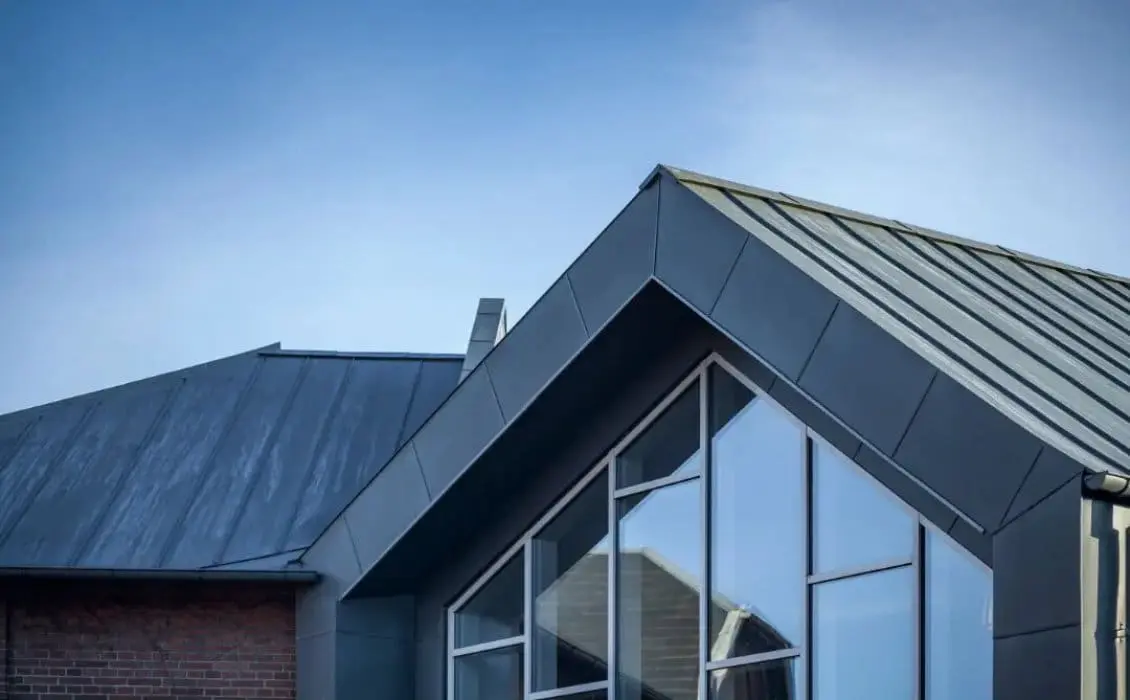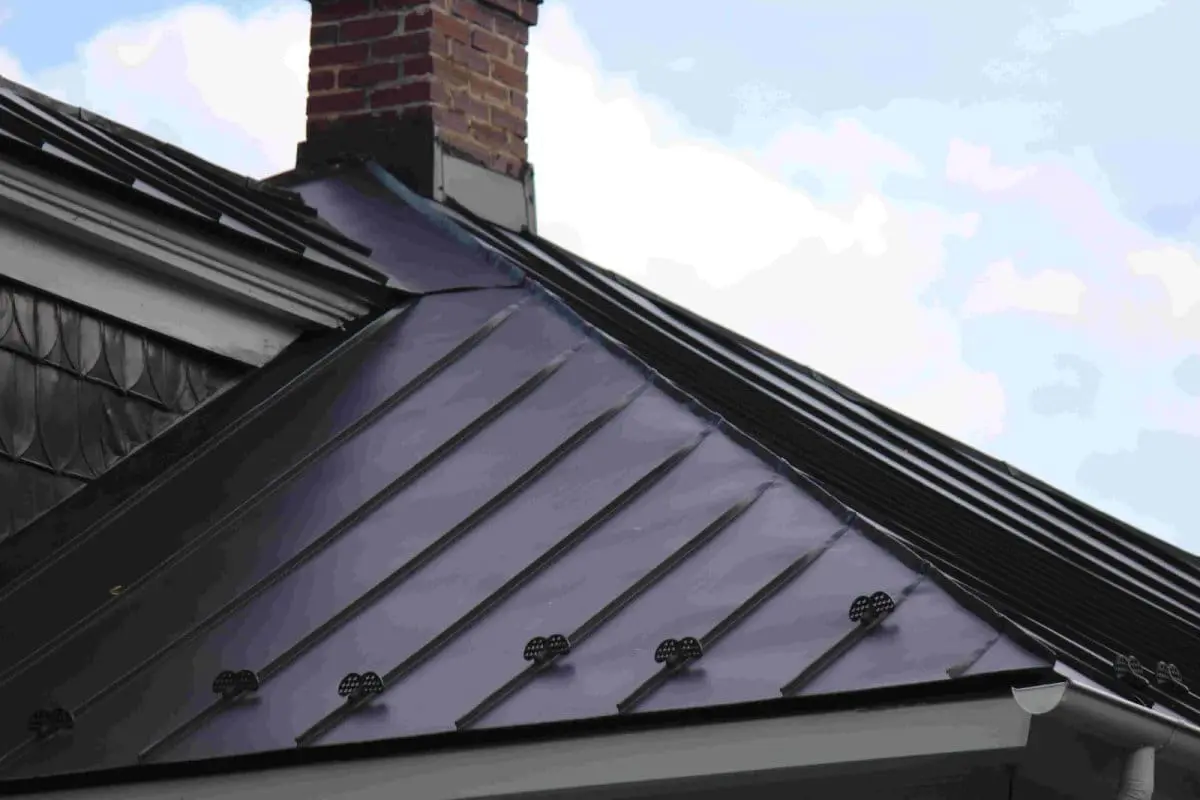The roof replacement process involves steps like identifying damage, stripping the old roof, and installing new materials. It also involves critical steps such as selecting a contractor, preparing the site, and inspecting the roof deck. This guide will help you understand each stage, making your project smoother and more manageable.
Roof Replacement Key Takeaways for HomeownersKey Takeaways
- Recognizing signs of roof deterioration, such as age and physical damage, is crucial for timely replacement to prevent costly repairs.
- A comprehensive initial inspection by a professional is essential to identify potential issues and ensure a solid foundation for new roofing materials.
- Selecting appropriate roofing materials and maintaining the new roof through regular inspections and cleaning can significantly enhance its durability and performance.
- Consider the condition of existing shingles when deciding whether to install new shingles over them or to remove them entirely.
Recognizing the Need for Roof Replacement
Knowing when to replace your roof is vital for maintaining your home’s integrity. The age of your roof is one of the first indicators to consider. Assessing this factor early on is beneficial. If your roof is between 20 to 30 years old, it may be time to consider a replacement. Aging roofs often lose their effectiveness, leading to potential leaks and structural damage. Timely replacing a roof can prevent leaks and structural damage, ensuring the safety and integrity of your home.
Physical signs of damage also play a significant role in determining the need for a new roof. Curling shingles, either at the edges or in the middle, are strong indicators that your roof is nearing the end of its life. Similarly, finding granules from asphalt shingles in your gutters suggests that your roof is aging and losing its protective layer. After severe weather events, a significant number of cracked or missing shingles can also signal the need for a complete roof replacement.
Ignoring these signs can lead to severe consequences. Water stains on your attic ceiling or visible light coming through the roof can indicate gaps and leaks, leading to water damage and costly repairs. Recognizing these early signs of deterioration is essential for taking timely action ensuring the longevity and safety of your home.
Initial Roof Inspection
A thorough roof inspection is the cornerstone of any successful roof replacement project. Regular inspections can help identify wear and potential damage early, preventing minor issues from escalating into major problems.
During an inspection, it’s important to check for rot, mold, or soft spots on the roof deck, as these can compromise the integrity of the new roofing materials. A thorough inspection is crucial before replacing a roof to identify any underlying issues that need to be addressed.
A professional roofing contractor can provide a more comprehensive assessment than a DIY approach. Roofing contractors are trained to spot issues that might be overlooked by an untrained eye, ensuring that all potential problems are addressed before they lead to costly repairs.
Preparing for Roof Replacement
Adequate preparation ensures a smooth roof replacement process. It contributes to overall efficiency as well. The first step is to obtain the necessary permits, as local regulations often require them for significant roofing projects. Permit fees and inspection costs should be factored into your budget to avoid any surprises. It’s also important to coordinate the schedule with your roofing contractor, as a typical roof replacement takes three to four days. Proper preparation is essential for replacing a roof efficiently and effectively.
Discussing material delivery with your contractor ensures everything is on-site when needed, preventing delays. Informing your neighbors about the upcoming work can also help manage expectations and prepare them for any noise or disruption.
Safeguarding your property is another vital step. Lay tarps and plywood to shield your landscaping and outdoor areas from falling debris. Lastly, arranging for a dumpster rental will facilitate the disposal of old roofing materials, keeping your property clean and organized throughout the project. If the contractor does not provide protection for your flowers or shrubbery, make sure to cover them yourself to avoid any damage.

Roof Replacement Cost and Budgeting
Understanding the financial implications of a roof replacement is essential for effective planning. Expenses can vary widely depending on the type of roofing material, the size and complexity of the roof, and your geographic location. Homeowners should be prepared for a significant investment when undertaking this project.
For example, asphalt shingles remain a popular option because of their affordability and ease of installation, while metal roofing offers enhanced durability and a sleek appearance, albeit with a higher initial cost. When planning a roof replacement, it’s important to factor in additional expenses beyond the cost of the roofing materials. These include the removal of old roofing, repair work on the roof deck, and the installation of components such as flashing.
Additionally, hiring a professional roofing contractor is a critical part of the process. A thorough evaluation of the current roof’s condition, the state of the underlying structure, and compliance with local building codes can help in developing a comprehensive budget. By planning ahead and considering all potential costs, you can ensure a smoother and more financially manageable roof replacement process.
Removing the Old Roof
The removal of the old roof is a critical step in preparing for the installation of new roofing materials. Stripping away old shingles, nails, and other components creates a clean slate for the new roof. A roofing shovel is the preferred tool for efficiently removing old materials. It’s best to work from the peak of the roof downward, as this method helps manage the debris effectively.
Safety is paramount during this stage. Ensure that all removed materials are promptly disposed of using a rented dumpster or a dump truck. This practice maintains a clean worksite and prevents accidents.
A crew of four to five people is ideal for efficiently removing an entire roof’s worth of shingles in one day.
Inspecting and Repairing the Roof Deck
After removing the old roof, inspecting the existing roof deck is the next vital step. This inspection ensures the structure’s integrity and identifies any areas that need repair. Common issues include rot, mold, and soft spots, which must be addressed to provide a solid foundation for the new roofing materials.
Attach new roof sheathing if significant damage is found to restore the roof’s strength. Repairing the roof deck not only fixes visible damage but also prevents future leaks, ensuring the new roof’s longevity.
Ensuring a robust and intact roof decking is vital to support the weight and structure of the new roofing materials properly.

Installing Underlayment and Drip Edge
Installing underlayment is a critical step in protecting the roof deck from moisture. This layer serves as a barrier to prevent water from seeping into the wood decking. The underlayment, often made of felt paper, should be applied from the bottom of the roof upwards, ensuring that water sheds downwards properly.
Overlapping the layers is necessary to prevent water penetration, securing the underlayment with nails or staples every 3 to 4 inches along the lower half of the paper. Installing underlayment and drip edge are critical steps in replacing a roof to ensure proper moisture protection.
The metal drip edge directs water away from the fascia boards and into the gutter system. It should be installed over the underlayment at the eaves and under the underlayment at the rakes to ensure optimal protection.
Secure the drip edge with roofing nails every 12 inches for stability. Proper installation of these components is vital to prevent moisture issues and ensure the longevity of the new roof.
Applying Ice Barriers and Roofing Paper
In areas that are susceptible to ice dams, installing ice barriers is crucial. This practice prevents damage caused by ice accumulation. These barriers create a waterproof seal around nails, preventing leaks caused by ice dams and wind-driven rain. Installation usually starts at the roof’s edges, where ice dams are likely to form, and extends up the roof to protect vulnerable areas.
Roofing paper, also known as felt paper, is applied over the underlayment to provide an additional layer of moisture protection. The paper should be nailed or stapled every 12 inches with proper overlap to ensure that water does not seep through. This combination of ice barriers and roofing paper enhances the roof’s overall resilience against water damage and ensures the new roof’s longevity. Applying ice barriers and roofing paper is essential when replacing a roof in areas prone to ice dams.
Installing New Shingles or Other Roofing Materials
The installation of new shingles or other roofing materials marks the beginning of the final phase of the roof replacement process. Starting at the eaves, the starter shingles should be installed in a straight line, using a chalk line to ensure accuracy. Proper alignment ensures both aesthetic appeal and functionality. When installing new shingles, ensure that any existing shingles are properly aligned and in good condition.
Different roofing materials require specific installation techniques. For instance, flashing, typically made from galvanized steel, must be embedded in roofing cement to create a watertight seal around roof penetrations. The length of step flashing should be at least 10 inches and extend beyond the width of the installed shingles to ensure adequate protection.
Whether you choose asphalt shingles, clay tiles, or other roofing materials, it’s important to follow manufacturer guidelines for proper installation. This ensures that the roof is not only visually appealing but also durable and resistant to weather conditions. Proper installation techniques are key to the longevity and performance of the new roof.
Adding Flashing and Ridge Vent
Flashing and ridge vents are critical components that enhance the functionality and longevity of your new roof. Flashing prevents leaks around vents, chimneys, and other roof penetrations by creating a watertight seal. It should be secured by nailing and sealing with caulk to prevent water infiltration.
Ridge vents play a vital role in ensuring proper air circulation in the attic, preventing moisture buildup, and extending the roof’s lifespan. Properly installing ridge vents involves placing them along the roof ridge and ensuring they are securely fastened.
Flashing and ridge vents together maintain the roof’s structural integrity and enhance its overall performance. Adding flashing and ridge vents is a crucial step in replacing a roof to prevent leaks and ensure proper ventilation.

Final Inspection and Cleanup
After the installation is complete, a final inspection ensures that the new roof meets all safety and quality standards. Homeowners should conduct a walkthrough with the contractor to confirm that all agreed-upon tasks have been completed and address any concerns. This step ensures satisfaction with the roofing project. A final inspection and thorough cleanup are essential to complete the process of replacing a roof.
Cleanup is an important part of the process. Contractors often perform a thorough sweep of the property to collect any leftover debris, nails, and materials. Homeowners should understand the cleanup expectations before the project begins to ensure that the property is left clean and tidy. Proper cleanup enhances curb appeal and ensures home safety.
Choosing the Right Roofing Materials
Selecting theright roofing materials and roof material is a critical decision that affects the roof’s durability, efficiency, and appearance. The choice of material is heavily influenced by the local climate. For example, tile and metal roofs are ideal for regions with intense sun due to their reflective properties. Local building codes may also dictate the type of materials suitable for roofing in specific areas. Choosing the right materials is a critical step in replacing a roof to ensure durability and efficiency.
Popular choices for roofing materials include asphalt shingles, metal roofs, and clay tiles. Roofing shingles are the most common due to their affordability and ease of installation. Asphalt shingles, wood shingles, and shakes offer a natural aesthetic but require regular maintenance to prevent decay. Slate roofing, although costly, can last over a century with minimal maintenance.
Environmental impact is an increasing concern among homeowners. Many are now considering recyclable and sustainable materials. Synthetic roofing materials combine durability with aesthetic appeal, often imitating traditional designs. Clay and concrete tiles offer excellent thermal mass, improving energy efficiency in homes.
Consider factors like locality, preference, and roof pitch when choosing roofing materials to ensure the best fit for your home.
DIY vs. Hiring a Professional Roofing Contractor
Choosing between a DIY approach or hiring a professional roofing contractor is a significant decision. This decision plays a crucial role in the roof replacement process. Roof replacement carries significant safety risks and requires professional expertise for effective execution. Hiring a professional roofer ensures high-quality workmanship and efficiency and ensures safety and quality.
DIY projects offer the advantage of managing the timeline independently and potentially saving on labor costs. However, DIY roofing presents severe risks related to safety and challenges in identifying hidden damages or leaks. Choosing materials incorrectly can significantly impact the roof’s cost and safety. It can also affect the longevity of the roof in DIY projects.
For minor repairs, a DIY approach may be viable if the individual is experienced and equipped appropriately. However, for a full roof replacement, hiring a professional roofing contractor is recommended to ensure safety, quality, and compliance with local building codes. If you need to replace a roof, it’s essential to consult with experts.
Choose Xterior LLC for Your Roof Replacement in North Carolina
When it comes to roof replacement, experience, quality, and trust matter. Xterior LLC is the premier choice for roofing in High Point and Wilmington, NC, offering expert roofing solutions that stand the test of time. With years of experience, we specialize in durable, weather-resistant roofing materials tailored for North Carolina’s climate. Our process begins with a roof inspection, followed by a transparent consultation where we guide you through material selection, budgeting, and timeline expectations. As a Google Guaranteed and Owens Corning Preferred Contractor with an A+ BBB rating, we are committed to delivering excellence in every project.
Beyond roofing, we provide comprehensive exterior services, including storm damage restoration, vinyl siding installation, window replacement, and gutter solutions.
Whether you need a full roof replacement or protection against future damage, our team ensures a seamless experience with top-rated craftsmanship and customer service. Trust Xterior LLC to protect and enhance your home’s beauty and value. Contact us today for a free estimate and experience roofing done right.
Maintaining Your New Roof
Maintaining your new roof is essential for prolonging its lifespan and ensuring it remains in good condition. Annual inspections help identify issues early, preventing minor problems from escalating. Cleaning your gutters at least twice a year prevents water damage and ensures the roof functions effectively. Regular maintenance is essential after replacing a roof to ensure its longevity and performance.
Regularly removing debris, such as leaves and branches, from the roof prevents mold and moisture buildup. Seasonal pruning of trees near the roof can reduce the risk of damage from falling branches. A protective sealant enhances your roof’s resistance to water damage and extends its lifespan.
Frequently Asked Questions
How often should I inspect my roof?
You should inspect your roof at least once a year to identify and address potential issues early. Regular inspections can help prolong the life of your roof and prevent costly repairs.
What are the signs that I need a new roof?
If you notice your roof’s age, damaged shingles, or visible light in the attic, it is time to consider a new roof. These signs indicate significant wear and potential structural issues that must be addressed.
Can I replace my roof myself?
While it is possible to replace your roof yourself, it is risky; hiring a professional is advisable for both safety and quality assurance.
How do I choose the right roofing material?
To choose the right roofing material, assess your local climate, the desired aesthetics, and compliance with building codes. This approach ensures durability and harmony with your home’s design.
What maintenance tasks should I perform on my new roof?
To ensure longevity and performance of your new roof, conduct regular inspections, clean the gutters, and remove any debris. These maintenance tasks are crucial for optimal roof health.
Conclusion
Mastering the roof replacement process involves recognizing the need for a new roof, conducting thorough inspections, and preparing adequately. The actual replacement process includes removing the old roof, inspecting and repairing the roof deck, and meticulously installing each layer of roofing materials.
Whether you choose to DIY or hire a professional, understanding each step is crucial for a successful roof replacement. Understanding each step is crucial for successfully replacing a roof.
Maintaining your new roof through regular inspections, gutter cleaning, and debris removal is essential for prolonging its lifespan. By following these guidelines, you can ensure your home’s roof remains durable, efficient, and aesthetically pleasing for years to come.




